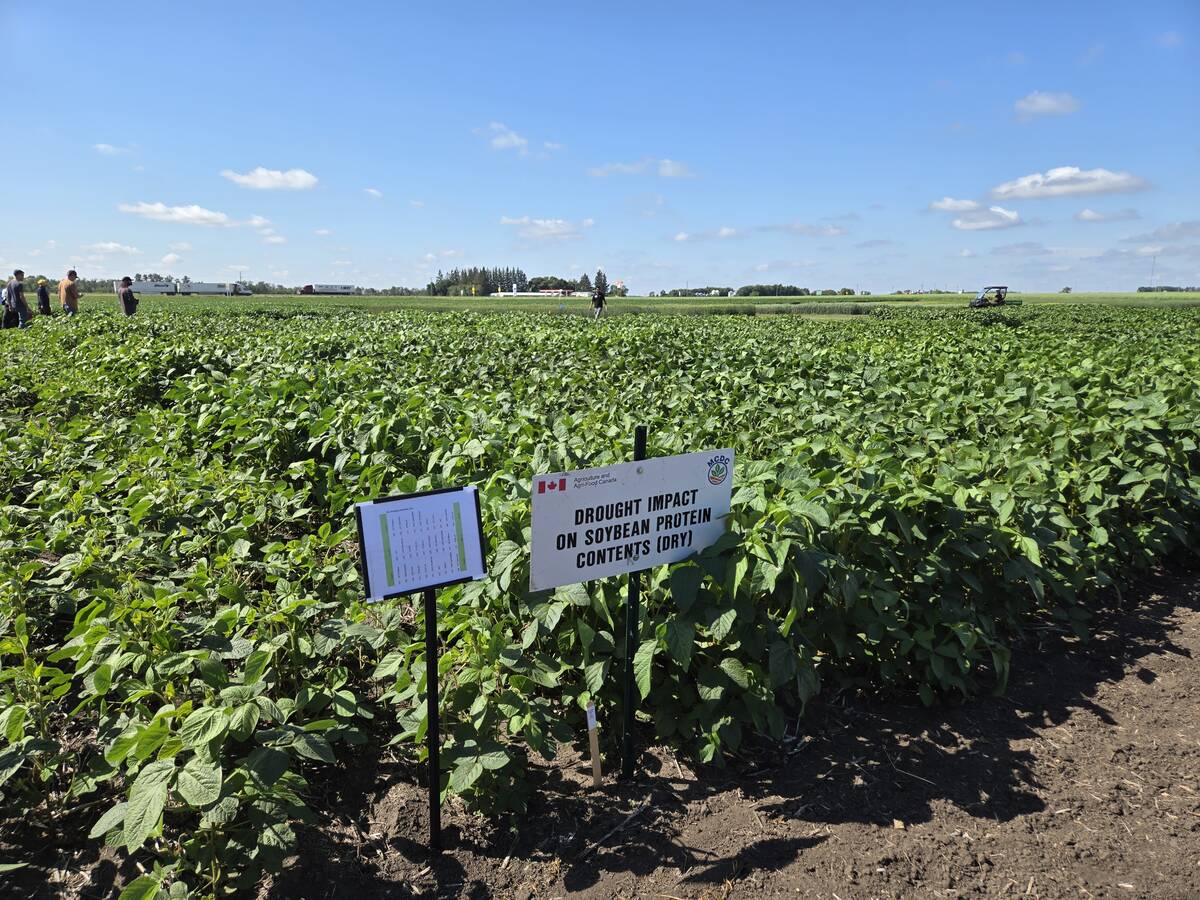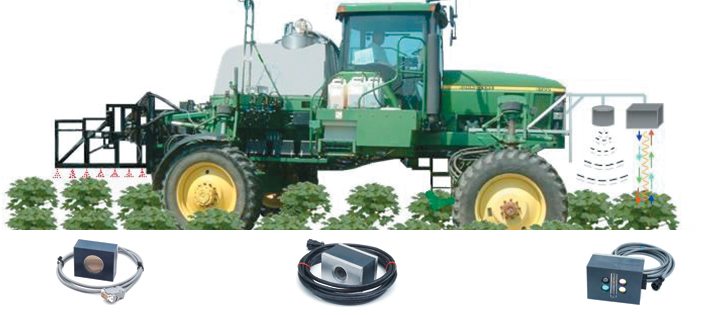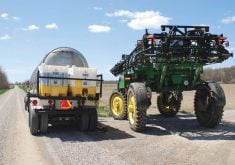How specific do we need to be in our precision farming endeavours? The answer, according to a researcher at Texas A&M, is “each plant should be managed individually.”
Alex Thomasson develops sensors and support devices that fit at the tip of leading edge precision ag technology.
He’s currently working with systems that allow a fertilizer wagon to take real-time readings and apply product on a plant-by-plant basis as the tractor pulls the wagon down the field at nine miles per hour.
The success of this sci-fi concept hinges on the speed and accuracy of the sensors Thomasson is developing. However, plant-by-plant management is not the real goal, says Thomasson.
Read Also

Carberry field day looks for agriculture solutions
Manitoba farmers explored research solutions for resilient crops, perpetual agronomic issues and new kinds of agricultural products at a field day at the Manitoba Crop Diversification Centre in Carberry on Aug. 6.
“What we really want to do is force a field to be as homogenous as possible. We all know you get a better financial return if every plant in a field matches the performance and growth stages of every other plant in the field,” he says.
A uniform plant stand allows the producer to make fertilizer and crop protection applications across the whole field rather than in segments or zones. Harvest can also be performed on a whole field basis in one shot.
The ultimate scenario is to have every seed germinate, emerge, stage and be harvested at the same time, resulting in a totally uniform crop in terms of quality and quantity. That ideal situation will never happen, but it does give researchers a target.
“Even if we use different seed varieties and fertility prescriptions for our different management zones, we know that soil texture, organic matter, pH, weather and many other factors prevent us from ever having a truly homogenous crop. It can’t be done,” he said.
“True, the newer varieties from breeders are giving us crops that are more homogenous, but there’s still a lot of variability because of the soil, even in our flat fertile river bottom fields here down south. Plant breeders can’t change the soils or the weather.
“But if we can bring management down to a plant-by-plant basis, at least we’re one step closer to a uniform crop.”
But is there such a thing as too precise? Is there a point at which the necessary computer power is too complex and costly to justify plant-by-plant management?
Thomasson says producers must realize that plant-by-plant management systems don’t store or manipulate data from the sensors. The system is strictly sense and squirt.
“The system makes decisions many times a second as the applicator passes over each plant at eight or nine m.p.h. Based on what the sensor sees, it gives an immediate instruction to the controller for each specific plant.”
If an individual plant needs nitrogen, it gets a squirt of nitrogen. If the sensor detects disease, the plant gets a squirt of fungicide. He says nutrition and health are really the only two factors a farmer can manage in this manner once the plant is up and growing.
Thomasson’s role at Texas A&M is to develop new opti-electronic sensors that have never before been used in agriculture, an area he has specialized in most of his career. He doesn’t use available off-the-shelf components.
“We have new technology right now, developed here at Texas A&M, to read sorghum plants and make real-time applications.”
Will plant-by-plant precision ag ever become a genuine on-farm reality?
“It’s a question of payoff. First, it’ll happen in the higher value horticulture crops, the fruits and vegetables.
“It’s somewhat questionable if you really need plant-by-plant management in all crops, like the large-scale field crops. It may happen if the payoff is there.”
Contact Thomasson at thomasson @tamu.edu.
















